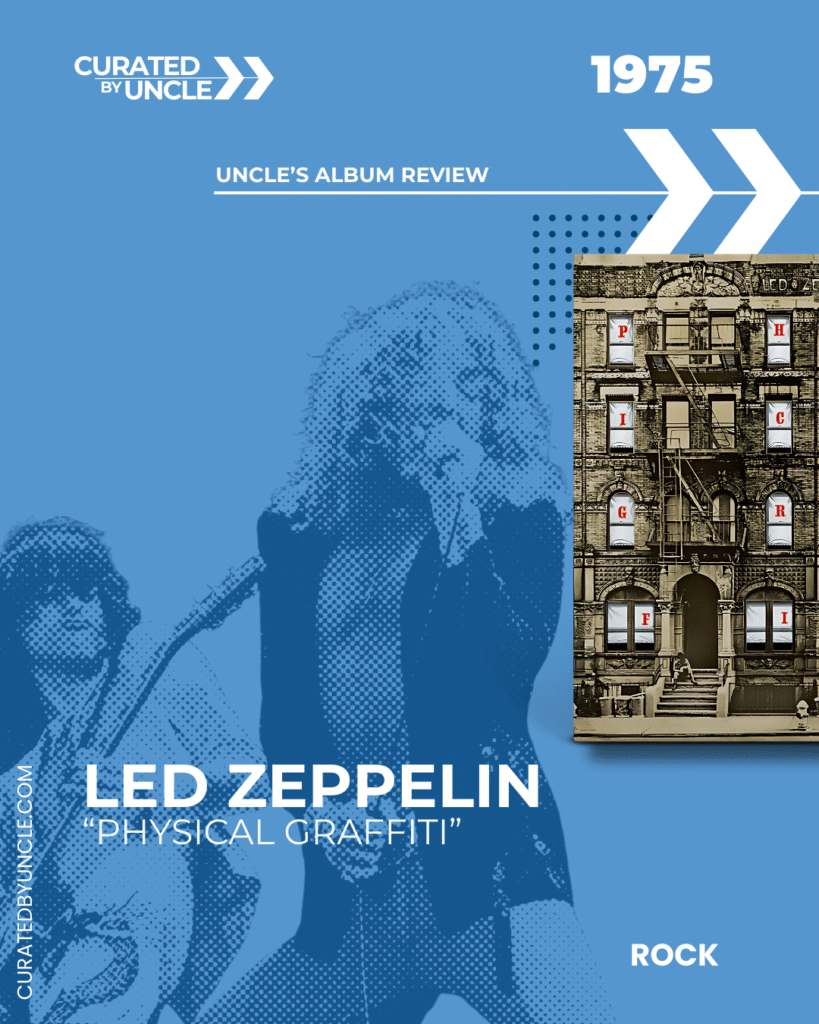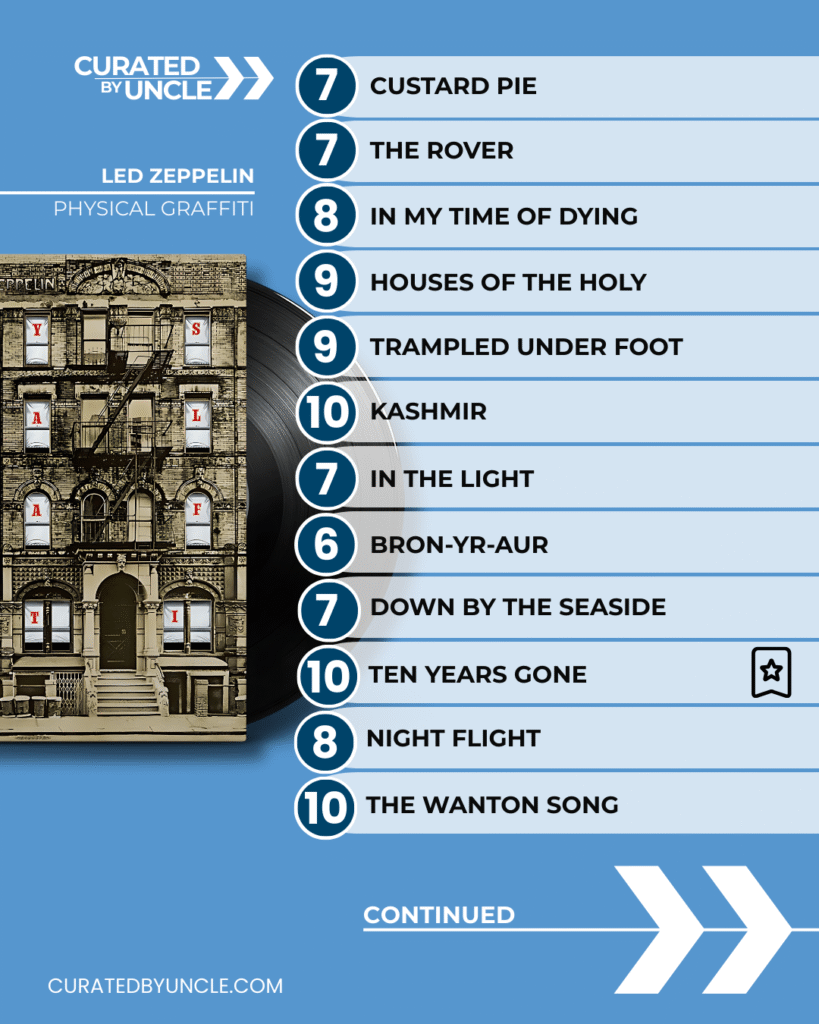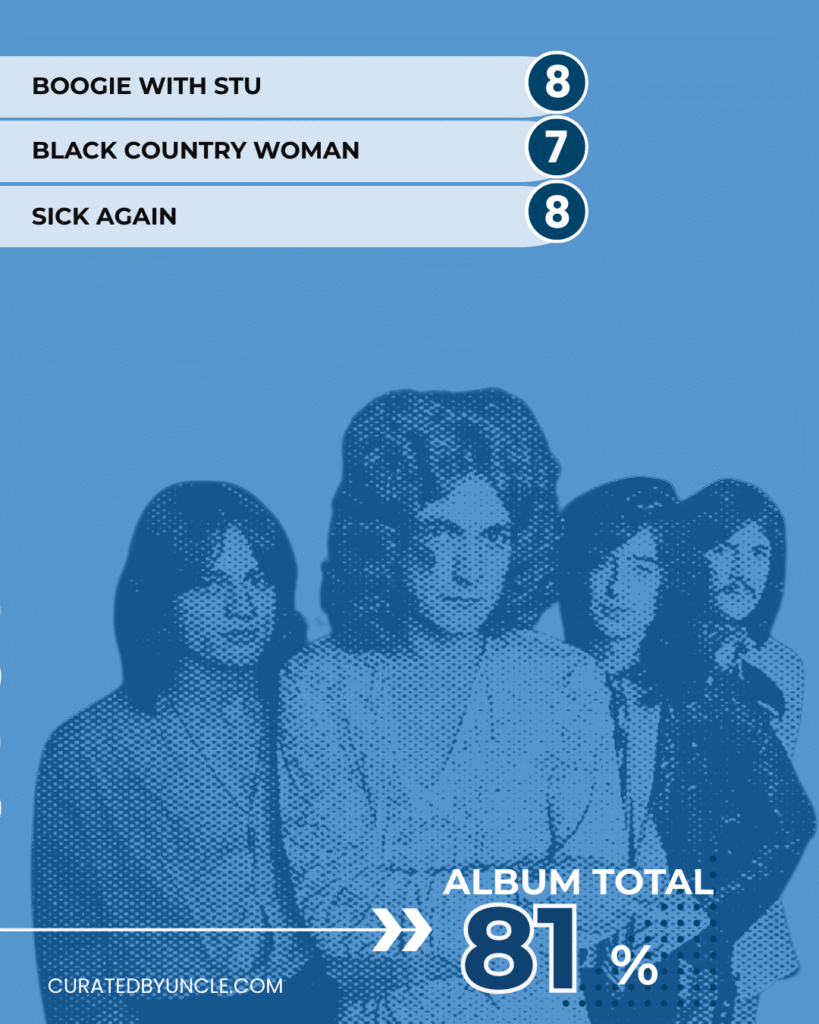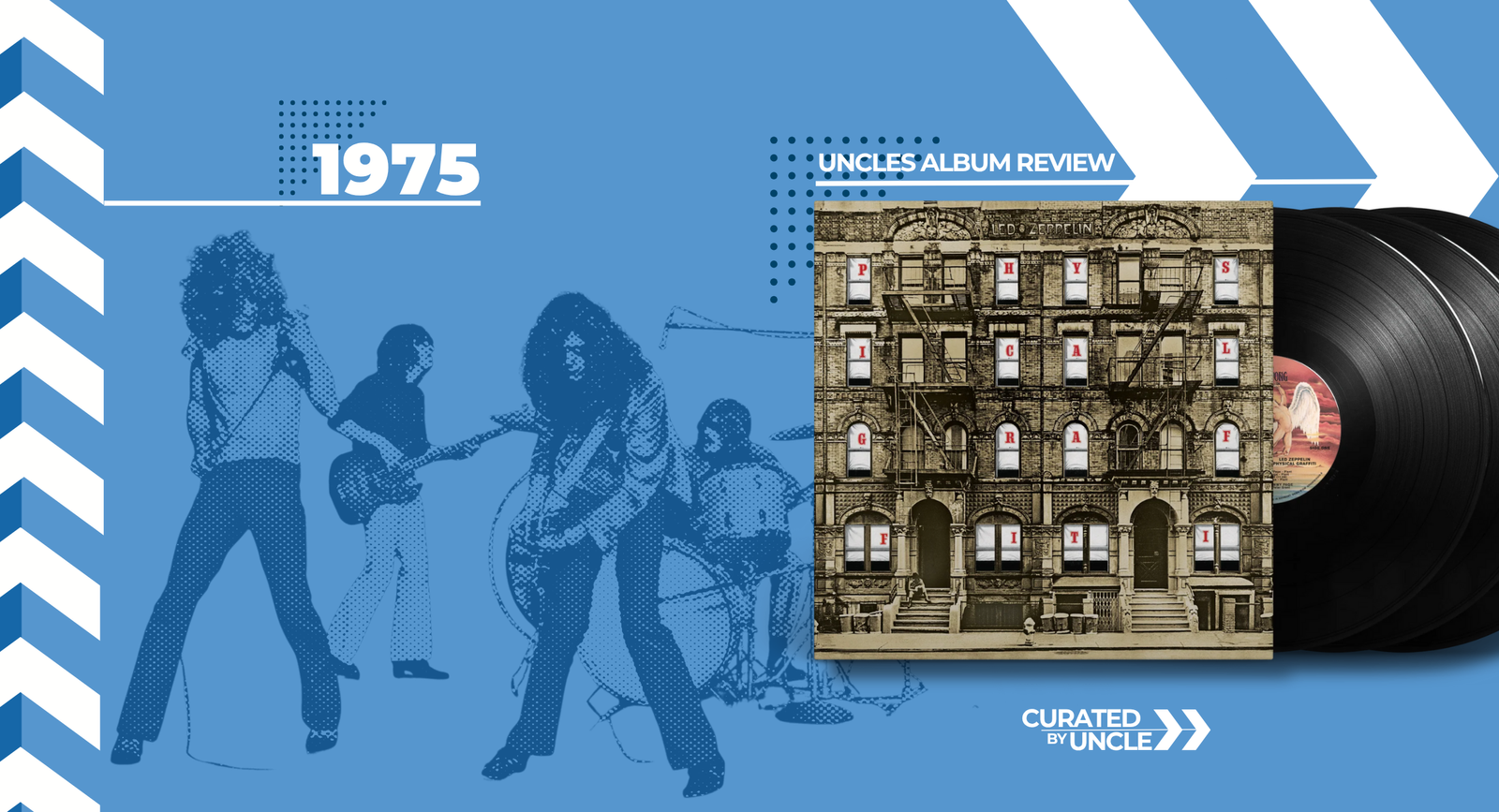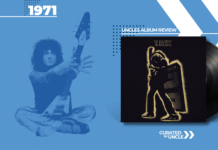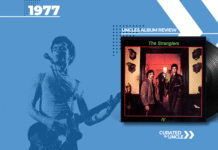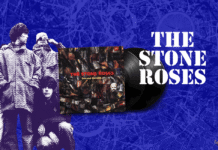Welcome to the Monster
By 1975, Led Zeppelin were no longer a rock band, they were a continent. They’d conquered stadiums, inspired lawsuits, and probably ruined more hotel furniture than IKEA could ever replace. So what do you do when you’ve already conquered the world? You release a double album so bloated it could capsize a small ferry.
Physical Graffiti is the sound of Zeppelin stretching out. Not just stretching their songs, but stretching everything: blues, folk, Eastern mysticism, funk, prog… if it could make a noise, Jimmy Page shoved it on here. It’s excessive, indulgent, and utterly brilliant. I remember the first time I put it on, thinking: “How long is this thing?” Answer: long enough to grow a beard mid-listen.
Table of Contents
The Line-Up of Rock Demigods
- Robert Plant – vocals, golden god, shirt perpetually unbuttoned
- Jimmy Page – guitar, producer, occult enthusiast
- John Paul Jones – bass, keyboards, secret genius holding it all together
- John Bonham – drums, human avalanche
If the Rolling Stones were a gang, Zeppelin were a pantheon.
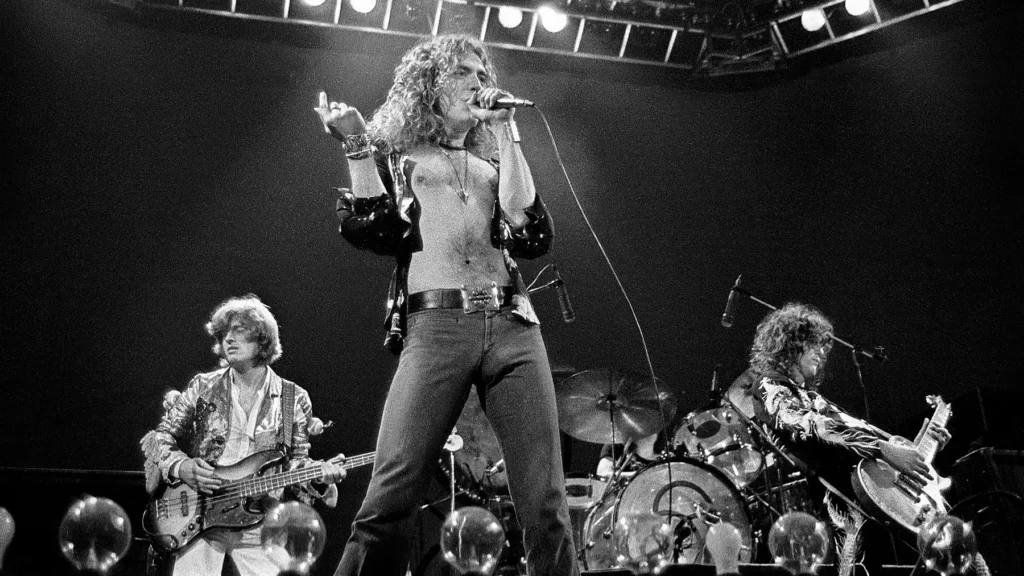
Themes: Excess and Experiment
Physical Graffiti is about as subtle as a brick through a stained-glass window. Themes range from sex to mysticism to apocalyptic rambling. It’s indulgent, overstuffed, and sometimes incoherent, but that’s the point. Zeppelin weren’t about restraint. They were about more.
Track by Track: A Guided Tour of the Excess
1. Custard Pie
Physical Graffiti Opens with sleaze and swagger. A funky riff, harmonica blasts, and Plant delivering innuendo with all the subtlety of a sledgehammer. It’s basically Zeppelin saying: “Yes, we’ve made our double album, and the first thing we want to do is shout about dessert as a sex metaphor.” Filthy and fun.
2. The Rover
A song that had been floating around since Houses of the Holy, finally finding a home here on Physical Graffiti. Big riffs, apocalyptic lyrics, Plant doing his shaman act. It’s not their most famous track, but it sets the tone: this is Zeppelin wandering the earth, dispensing riffs like thunderbolts. I’ve always loved the way it feels both loose and monolithic.
3. In My Time of Dying
Eleven minutes of blues gospel stretched to breaking point. Slide guitar wails, Plant howls about mortality, and Bonham pounds his kit like he’s trying to break into heaven by force. It’s indulgent, it’s exhausting, and it’s magnificent. By the end you feel like you’ve survived something. The false ending with Bonham yelling “that’s gotta be the one” is perfect.
4. Houses of the Holy
Yes, the song named after the previous album shows up here instead. Classic Zeppelin move. Funky, upbeat, with Page’s riffs dancing around Bonham’s groove. It’s one of their more playful tracks, proving that even amidst epic double-album excess, they could still sound like they were having a laugh.
5. Trampled Under Foot
Essentially Zeppelin’s take on funk. Driven by John Paul Jones’s clavinet, it’s relentless, hypnotic, and surprisingly danceable. Plant’s lyrics are car/sex metaphors, because apparently nothing screams eroticism like faulty pistons. This one slinks and struts in a way few Zeppelin tracks do. Every time I hear it, I imagine Zeppelin trying to steal Stevie Wonder’s lunch money.
6. Kashmir
The centrepiece of Physical Graffiti. The monolith. The song that makes everything else seem like rehearsal. Eastern scales, orchestral grandeur, Bonham’s drumming like tectonic plates shifting. It’s hypnotic, epic, and utterly unlike anything else in rock. “Kashmir” isn’t just a song, it’s an experience. The first time I heard it, I sat in silence afterwards, convinced rock music had peaked. It still feels that way.
7. In the Light
A strange, atmospheric piece with droning synths and Plant intoning mystical nonsense. It starts like a séance, then explodes into soaring rock. It’s Zeppelin at their most experimental, and while it doesn’t always land, it’s fascinating. I love it because it’s a reminder that Zeppelin weren’t afraid to get weird… really weird.
8. Bron-Yr-Aur
Two minutes of acoustic loveliness. Named after the Welsh cottage where Page and Plant had their folky epiphany, it’s a fingerpicked instrumental that offers a rare breather. Simple, delicate and beautiful. Like a glass of water in the middle of a whisky binge.
9. Down by the Seaside
Laid-back, almost country-ish, with a dreamy vibe that’s completely unlike most of their catalogue. Plant sings wistfully, Page plays it cool and Jones drapes organ all over it. Then suddenly it bursts into a loud section before drifting back again. It’s charming and strange, and I always thought it sounded like Zeppelin parodying themselves gently.
10. Ten Years Gone
One of Zeppelin’s most emotional moments. Layered guitars from Page, heartfelt vocals from Plant about lost love and sacrifice. It’s both delicate and massive, bittersweet yet powerful. This is Zeppelin proving they weren’t just about riffs and bravado they could break your heart too. It’s one of my favourites because it sneaks up on you emotionally.
11. Night Flight
A jaunty, upbeat rocker with Jones on organ and Plant sounding positively cheerful. Recorded years earlier, it’s got a playful, almost poppy feel. Which in the middle of this epic sprawl is both refreshing and slightly surreal. I like it because it shows that Zeppelin could do “light” when they wanted to.
12. The Wanton Song
A short, punchy riff monster. Page’s guitar snarls, Bonham hammers like a man possessed, and Plant rides the groove. It’s straightforward, heavy, and fun a reminder that Zeppelin could still bash out a good old-fashioned rock song between all the experimentation.
13. Boogie with Stu
Zeppelin’s idea of a jam session. Ian “Stu” Stewart from the Rolling Stones pounds the piano, Plant wails, and everyone has a laugh. It’s loose, it’s scrappy, and it’s got a lawsuit attached because it borrows heavily from Ritchie Valens’ “Ooh My Head.” Not essential, but entertaining.
14. Black Country Woman
An acoustic stomper, complete with the sound of a plane flying overhead at the start. It’s rough, playful, and has a rustic charm. Plant hollers, Page strums, Bonham stomps it feels like a drunken hoedown caught on tape. I always liked its ragged edges.
15. Sick Again
The closer, and it’s Plant’s sleaziest lyrical outing. Written about groupies, it’s both a confession and a brag, set to one of Page’s nastiest riffs. Bonham drives it home like a sledgehammer. It’s not noble, it’s not tasteful, but it’s pure Zeppelin, ending their magnum opus with a leer and a crash.
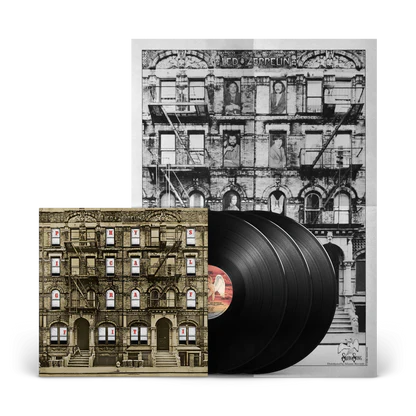
Artwork: Brownstones of the Gods
The sleeve of Physical Graffiti features a New York City tenement building with die-cut windows. Slide the inner sleeve around and different images appear: band members, fans, bizarre objects. It’s clever, it’s iconic, and it screams 1970s excess in cardboard form. Only Zeppelin could make a building look like a monument to debauchery.
Production: The Page Factory
Physical Graffiti was recorded at Headley Grange, a creaky country house with acoustics so good they made Bonham sound like he was drumming in Valhalla. Jimmy Page produced it himself, layering riffs like some sort of wizardly bricklayer. You can hear every creak, every echo, every swagger. It’s massive, but not polished, raw power wrapped in grandeur.
Trivia: Zeppelin Factoids
- “Kashmir” was almost left unfinished because Jones hated the mellotron part.
- The brownstone on the cover is 96 and 98 St. Mark’s Place, New York. You can still visit it.
- Bonham’s drums on “In My Time of Dying” were so loud, neighbours complained from half a mile away.
- “Boogie with Stu” ended up in a lawsuit with Ritchie Valens’ family.
- “Bron-Yr-Aur” was the shortest Zeppelin track ever released.
Legacy: The Double Album as Weapon
Upon release, Physical Graffiti went to number one in both the UK and US, cementing Zeppelin’s dominance. It proved they could sprawl across genres and still sound like themselves. Critics were divided, some thought it was brilliant, others thought it was self-indulgent. Both were right.
Today, it stands as one of the greatest double albums ever, up there with Exile on Main St. and The White Album. And it’s still exhausting, in the best way.
My Final Thoughts: Beautiful, Bloated Brilliance
I think Physical Graffiti is Zeppelin at their absolute peak and also their most ridiculous. It’s brilliant, it’s bloated, it’s occasionally boring, and it’s utterly irreplaceable. This is what happens when the biggest band in the world decides to do whatever the hell they want.
It’s not perfect, but it’s the imperfections that make it great. You can’t tame it, you can only surrender to it.
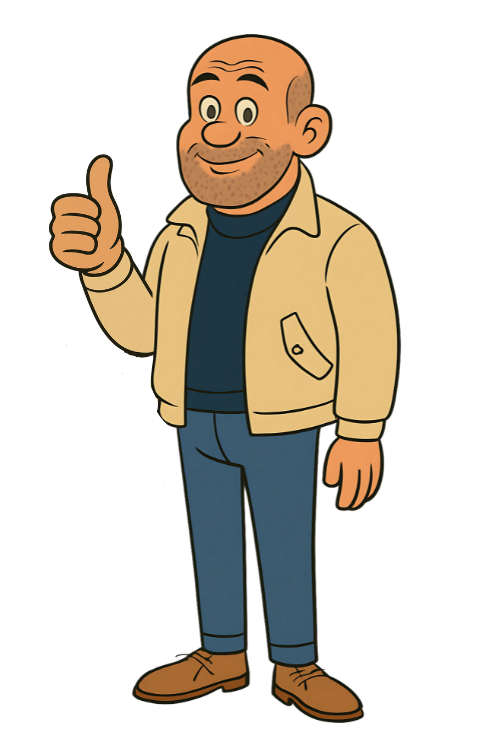
If You Liked Physical Graffiti, I Recommend These
- The Rolling Stones – Exile on Main St. (1972): Another sprawling double masterpiece.
- The Who – Quadrophenia (1973): Conceptual bombast, but brilliant.
- Pink Floyd – The Wall (1979): Excess turned into opera.
